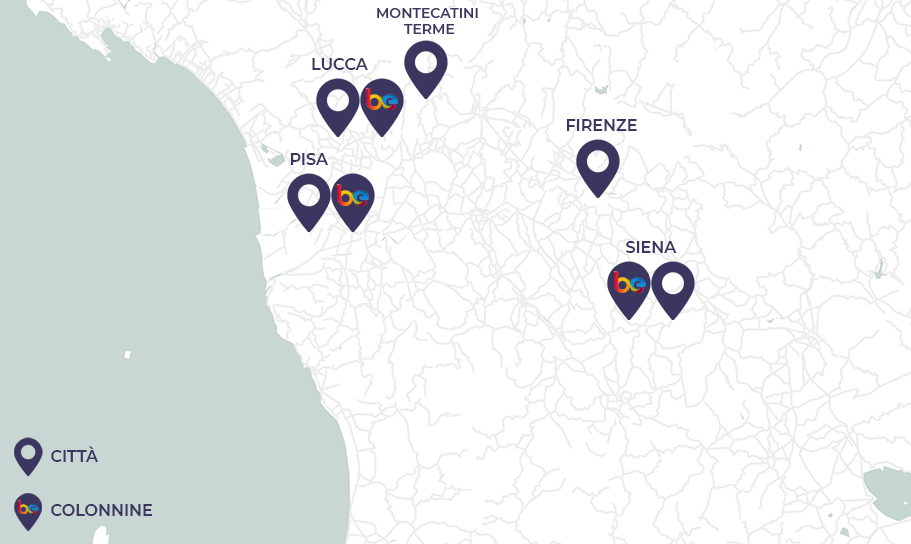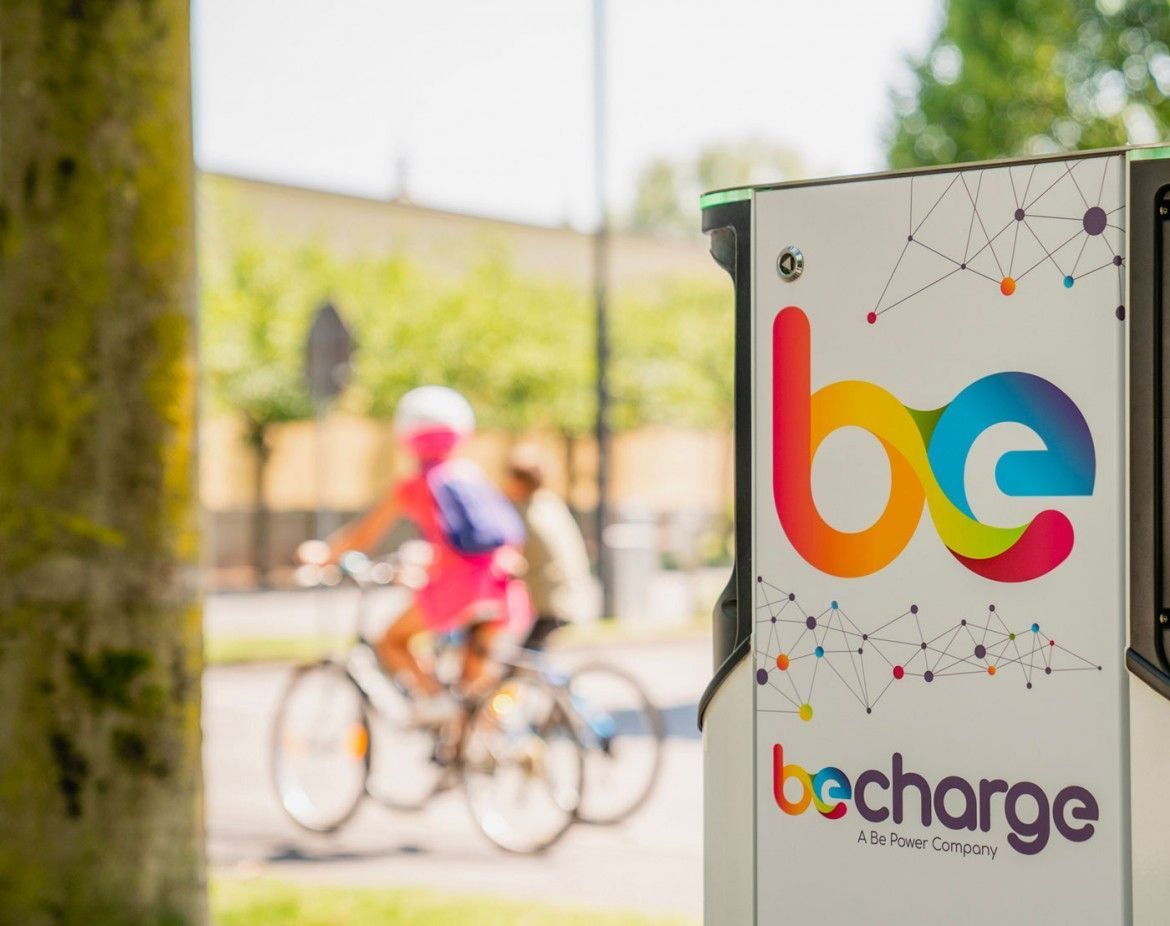Summer is drawing to a close and autumn is just around the corner – the perfect time to visit the cities without suffering the heat. On board our electric car, we decided on a tour of one of Italy’s most fascinating regions: Tuscany. A few months ago we told you about this beautiful region, but in different places: this time our tour starts from one of the most popular cities in the world, Florence.
Day 1 – Florence
Visiting Florence in a day is not easy, but fortunately the historic city centre is small and walkable, giving us the chance to see many of Florence’s famous sights in one day. The first stop is a gourmet one: we have breakfast at Caffè Scudieri, a historic café located in front of Florence’s famous Duomo.
After breakfast, it’s time to explore the city’s most enduring icon: the Cathedral of Santa Maria del Fiore, more commonly known as the Duomo. The chapel dominates the Florence skyline and is famous for its Renaissance red-tiled dome, designed in some by the great Florentine architect Filippo Brunelleschi.
You can choose to climb the 463 steps to the top of the dome, but we decide to climb Giotto’s Campanile – the adjacent Gothic bell tower – for a few euros, so we can enjoy a view that includes the Duomo.
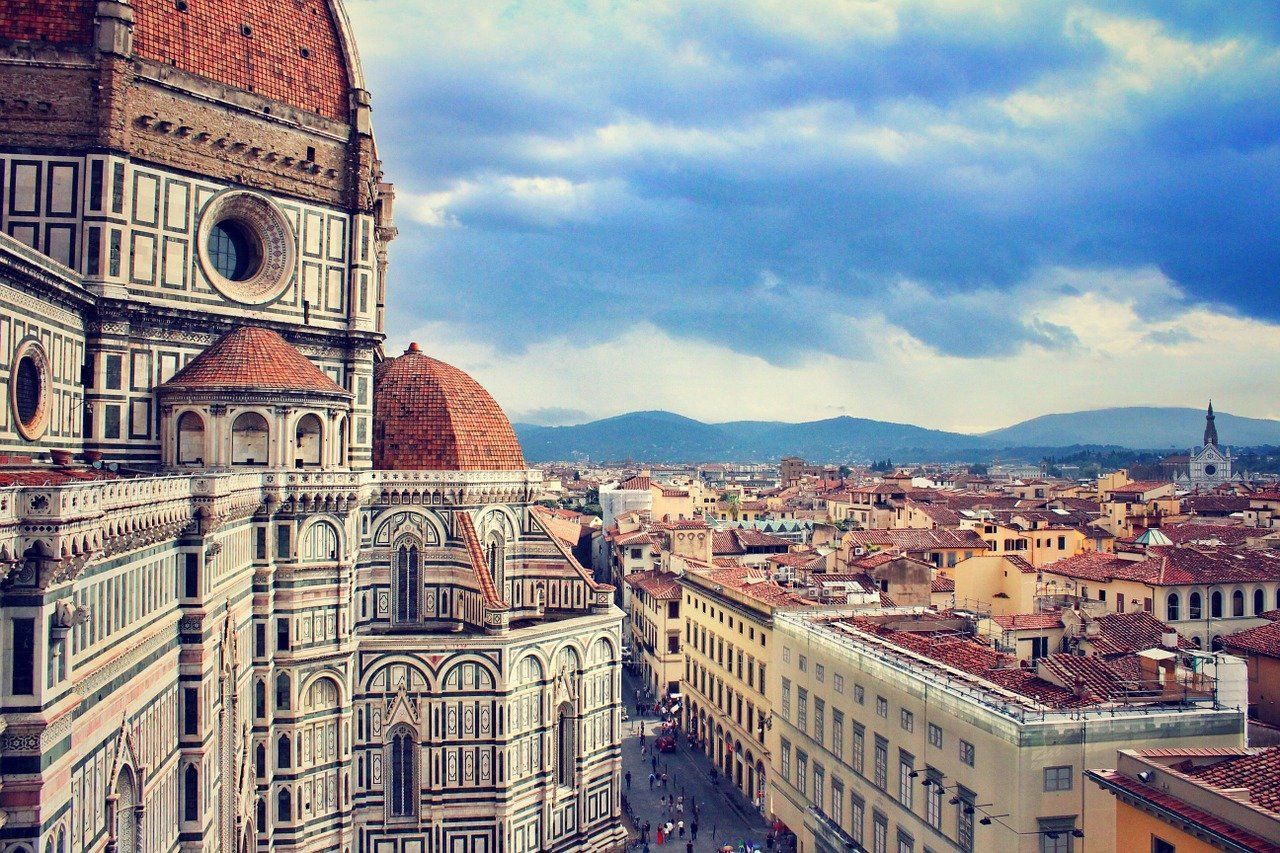
After getting off, it’s worth spending a couple of hours exploring the immense complex of buildings that make up Florence Cathedral and the surrounding Piazza. Entrance to the main 13th-century cathedral is free, but you’ll need to buy tickets for the museum, crypt and baptistery.
Come lunchtime, the right place to go is the city’s Central Market. On the ground floor is a classic market with stalls selling Tuscan wine, cheese, oil, spices, honey, meat and fish, while upstairs is the food court, with several bars and restaurants offering Tuscan and other specialities.
Well refreshed, we continue to Piazza della Signoria in the early afternoon. The square in front of the former government building, Palazzo Vecchio, is the political and historical centre of the city. There are several statues in the square, including a copy of Michelangelo’s David.

On one side is the Loggia dei Lanzi, built to house mercenaries, and later becoming a sort of open-air museum for the pieces of the Medici collection: statues from the Villa Medici in Rome were placed here.
Although it is possible to visit Palazzo Vecchio – today it is a museum – we decide not to do so, due to the somewhat limited access hours, but we recommend doing so if you have the chance.
We fall back (so to speak) on a visit to the Uffizi Gallery, which is located just below Palazzo Vecchio. Once inside, we were enraptured by the beauty of the museum, which not surprisingly is one of the most important in Italy. Seeing works by Raphael and Botticelli, Giotto, Tizian, Dürer, Rubens, Caravaggio and many others impressed us incredibly.
Another unmissable stop in the city is undoubtedly the famous Ponte Vecchio. We are talking about one of the most famous bridges in the world: it was built in 1345 after the previous bridge was destroyed by floods. We decide to cross the bridge taking a look at the jeweller’s shop windows, a characteristic of the area, and then walk to the nearest bridge to photograph it.

The history of this iconic bridge is a curious one: in 1442, butchers moved onto the bridge so they could immediately dispose of their waste in the Arno. In 1565, architect Vasari had a secret passageway built from Palazzo Vecchio to Palazzo Pitti, the new residence outside the then stinking city, on behalf of Cosimo I de’ Medici. However, the secret passage overlooked the old bridge, and as the rulers did not want to walk near the butchers’ shops or smell the rubbish, Ferdinando I de’ Medici ordered in 1593 that the goldsmiths should settle here.
Having arrived at dinner time exhausted, what you need is a schiacciata from L’Antico Vinaio, the city’s historic sandwich shop, known throughout the world.

Day 2 – Siena and Pisa
Waking up early, we head for Siena, where we will spend half a day. After parking our electric car at the Be Charge column in the Galleria PortaSiena shopping centre, we head into the city centre. The first mandatory stop is the famous Piazza del Campo.
This shell-shaped square is surrounded by several buildings, the most symbolic of which is undoubtedly the Palazzo Pubblico with its Torre del Mangia towering over the rooftops of Siena. The building also houses an important Civic Museum. Also not to be missed is Fonte Gaia, the beautiful fountain in the square decorated with reliefs of the Madonna and Child and other saints.

The Torre del Mangia is one of the tallest towers in Italy and was built as a symbol of the equal power between the state and the church between 1338 and 1348 with the explicit aim of being exactly the same height as Siena Cathedral. We decide to buy the ticket and climb the 400 steps of the tower, enjoying a spectacular view.
After taking a few photos, we leave the Tower and head towards Piazza del Duomo to explore Siena’s incredible cathedral. Here we find an entire complex combining the cathedral, the Baptistery of San Giovanni, the Piccolomini Library, the Crypt and the Opera Museum.
Siena Cathedral, the cathedral itself, is one of the most beautiful in the country as a remarkable example of the Romanesque-Gothic style. Displaying statues by Tuscan artists Michelangelo and Donatello, among others, incredible frescoes and stained glass windows and stunning mosaics, it is a true national treasure.

After visiting the Duomo, we have a quick lunch on our way to Pisa. The first place we visit is the most iconic in the city and probably in all of Italy: the Leaning Tower. Originally built as an independent bell tower for the nearby Cathedral 850 years ago, the Leaning Tower of Pisa is now an attraction in its own right.
We don’t climb to the top, as we didn’t book a ticket, so we continue our tour. Next to the Tower is the Cathedral of Santa Maria Assunta, also known as the Duomo di Santa Maria Assunta. Designed with strong Byzantine influences, the church boasts fascinating Pisan Romanesque architecture.

The Cathedral encompasses different styles and designs, highlighting the international influence on the city. Together with the Leaning Tower of Pisa, the cathedral attracts countless travellers every day. The Baptistery is Pisa’s third attraction in the trio of the so-called Piazza dei Miracoli.
The imposing bulk of the Baptistery stamps its dominance on the square, boasting a touch of oriental influence and a slight inclination in harmony with the adjacent tower. The Baptistery was opened in 1063, in front of the tower, in honour of St John the Baptist. Today the Baptistery of Pisa is world famous for its incredible acoustics.
After enjoying this beautiful area, we walk towards the Campo Santo Monumentale. The sacred space is filled with many captivating frescoes and magnificent medieval and Renaissance artworks, as well as a vast collection of Roman sarcophagi, sculptures and urns to admire. A visit to Campo Santo is a must for any history lover.
In addition to the huge amount of ancient art and history, Pisa also has some rather important modern works, such as Keith Haring’s mural. The fascinating work communicates a message of peace and harmony and is particularly important as it is one of the last works by the artist before his death.

Once we have retrieved our electric car, we head for the column in Via Carducci, not far from our hotel, and then go to rest after a dinner full of Tuscan specialities. The next day we get back on board our car in the direction of Lucca. Our first stop in the city is the Cathedral of San Martino.
Giorno 3 – Lucca e Montecatini Terme
Inside San Martino you can admire paintings by important artists such as Tintoretto and, above all, the famous funeral monument to Ilaria del Carretto, sculpted by Jacopo della Quercia. After leaving the Cathedral, we continue into the historic centre of Lucca, which will surely be one of the best memories of our trip.
As we walk, we are struck by the elegance of the heart of Lucca, its intricate web of narrow streets and squares and its vibrant colours. We treat ourselves to a stroll and the boutiques that line Via Fillungo, Lucca’s main shopping street.
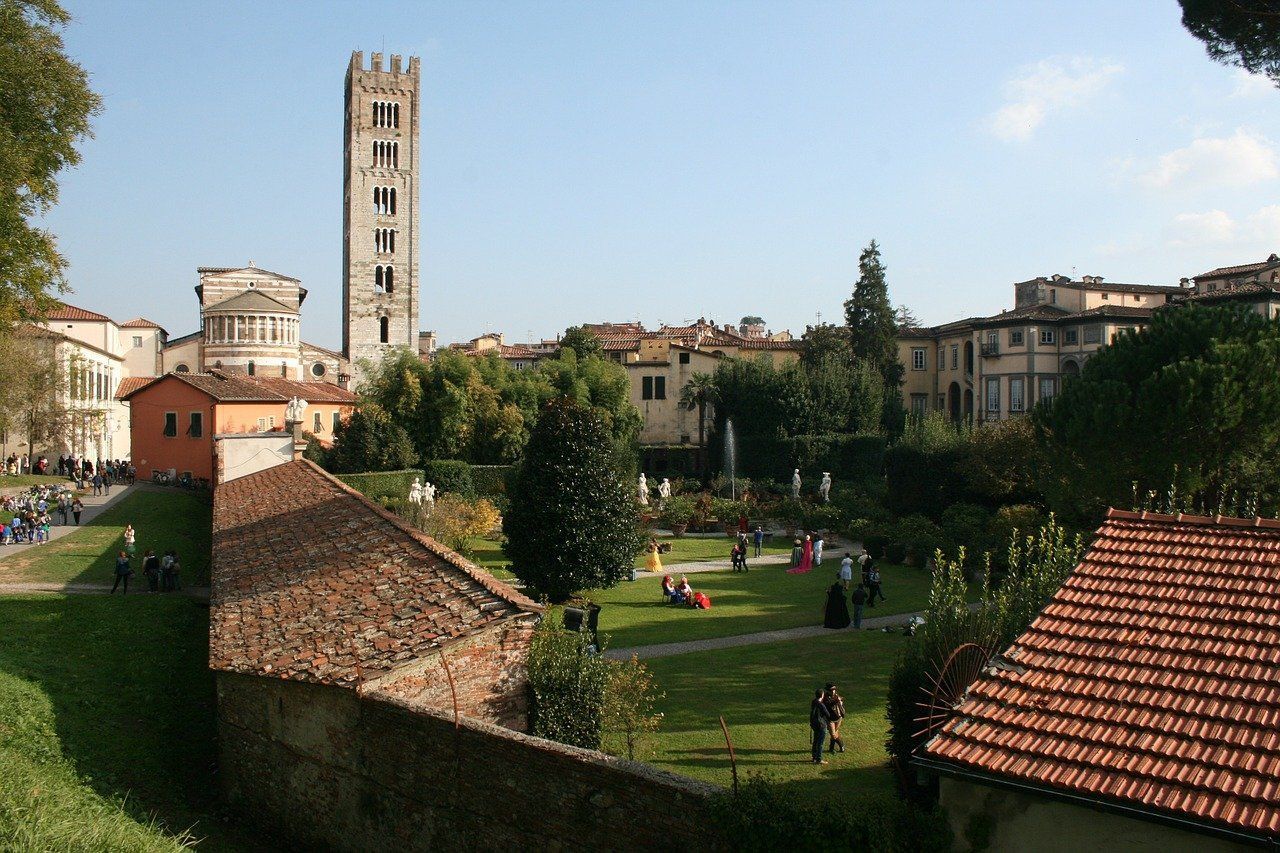
This brings us to Piazza dell’Anfiteatro, one of Lucca’s most iconic and beautiful places. Built on the ruins of an ancient Roman amphitheatre, the famous oval-shaped square is now one of the city’s favourite meeting places, especially on sunny Sundays.
Another must-see is the birthplace of the great composer Giacomo Puccini. For a small fee you can enter the rooms of the house, where you will find traces and memorabilia of his works and pieces, as well as furniture and objects belonging to him and his family. Then, just outside the museum, don’t forget to take a photo of the composer’s statue.
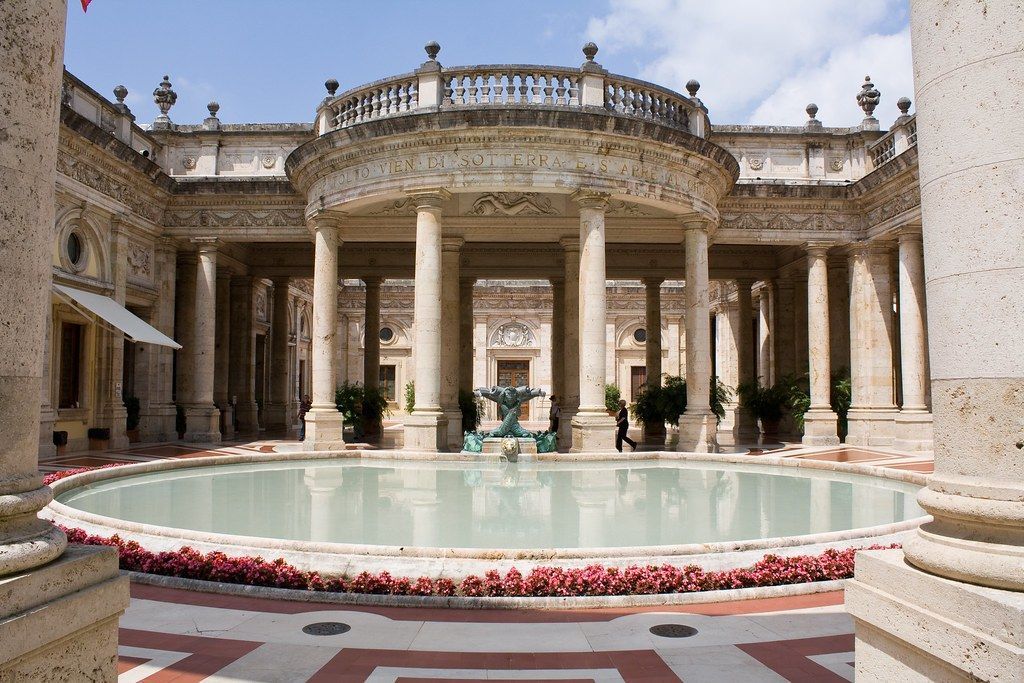
After having had lunch and recharged the car at the column in Via della Santissima Annunziata we go to Montecatini Terme, where we have booked an afternoon in the thermal structure of the town. During the evening we decide to make a tour in the city UNESCO patrimony. The next day, with the car full of energy but also of emotions and memories, we return home.
